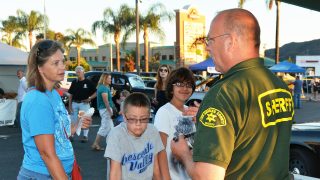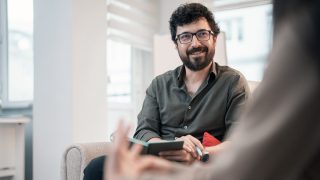
The complexities of modern policing have required law enforcement agencies to expand how officers are trained to do their jobs. It is not sufficient for training to focus solely on the law or on perishable skills, such as arrest and control, search and seizure, defensive tactics, driving and firearms. Yet, in bygone years, basic to advanced crime prevention training flourished across the nation. Today, such training is a rare find, with less than half of the states even having a functioning crime prevention association.
Yet, in recent years, there has been little crime prevention-specific training offered at the basic academy level. Community policing concepts may be discussed, but the actual nuts and bolts of crime prevention are hard to find. Having a knowledge base or skill set of crime prevention tactics to educate the community, including victims, witnesses and complainants, is critical to support problem-oriented policing (POP) and community-oriented policing and problem solving (COPPS).
If we asked citizens if they’d rather have the police preventing crime or responding to crime, what answer would they give?
With no uniformity on crime prevention training, the nation’s 664 state and local law enforcement academies are graduating officers who can’t provide a key piece of community outreach and training. Crime prevention training for new officers varies from zero to eight hours.
To produce officers who can successfully perform community-oriented policing techniques (e.g., proactive collaboration with community members), police academies and agencies must train recruits and patrol officers in crime prevention techniques to be independent, creative problem solvers.
It would be logical to presume that interaction by police officers sharing factual crime prevention tips and suggestions during daily citizen interaction as well as at selected crime scenes (burglaries, thefts, auto theft, vandalism, etc.), not only empowers citizens with the knowledge to protect themselves, but breeds positive interaction at the individual and neighborhood level.
What is crime prevention?
In 1971, criminologist C. Ray Jeffery coined the phrase crime prevention through environmental design (CPTED). This recognized that the environment and learning patterns impacted criminal behavior. This was combined with the defensible space theory (1972) by architect Oscar Newman, who identified the value of territoriality (fencing and barriers), natural surveillance (what can be easily seen), image (rundown neighborhoods, having an appearance that indicates no one cares) to fight crime. Ronald Clark identified situational crime prevention in 1976 that targeted and reduced crimes that occurred in particular places at particular times. This showed that crime could be prevented through a combination of tools or activities that included increasing the risk (CCTV), increasing the effort needed to complete a crime, reducing the rewards (convenience stores with limited cash in a till), removing the opportunity and eliminating excuses for deviant behavior (warning signage).
These principles got law enforcement talking about windows, lighting, fences and landscaping (including rosebushes), which could reduce opportunities for crime in cost-efficient ways. We saw crime prevention programs sprout up across the country in the 1970s with crime prevention training programs.
POP hit the scene in 1979, championed by Herman Goldstein, and looked at eliminating root causes of specific criminal activity. The crime triangle was created, which identified three key requirements for a crime to occur. This includes the offender/desire, ability and victim/opportunity. Remove one or more sides of the triangle, and a crime cannot be committed.
To get to a big-picture impact, we must seize the opportunity to provide law enforcers with the basic and technical skills to engage and train a community in reducing the opportunity for crime to occur. If we asked citizens if they’d rather have the police preventing crime or responding to crime, what answer would they give? Prevent, right? Yet that’s not where resources are being invested.
Resources and training for today
Today, not all states even provide a basic crime prevention training class. Less than half of the states in America have a state crime prevention association. Crime prevention resources from federal agencies, insurance companies and nonprofit groups that once provided printed materials and demonstration kits for such things as locks have all but dried up, except for some downloadable PDFs from the 1970s.
LAW Publications has been a publisher of crime prevention publications for law enforcement agencies for over 40 years. Based in Carrollton, Texas, LAW partners with police and sheriff’s departments to sell advertising in crime prevention educational magazine-quality materials to fund an agency’s brochure materials at no cost to law enforcement. LAW now provides social media tools for agencies to utilize and just created community engagement awards to recognize the efforts of agencies to connect with their communities.
There are a few certification designations that are available to enhance your professional credibility in the field of crime prevention. The COVID pandemic gutted face-to-face training over the past couple of years, and we have seen new online training options being offered.
The American Crime Prevention Institute (ACPI) provides both ground- and online-based classes and certifications in basic crime prevention, CPTED, security assessments, school security and community policing. These are lifetime certifications once the course is completed and a test is completed.
The International Society of Crime Prevention Practitioners (ISCPP) was formed over 40 years ago and offers a three-day online class to receive their crime prevention specialist designation, which does not require renewal or recertification.
The National Institute of Crime Prevention (NICP) is another training provider that offers a national certification in CPTED with the completion of its basic CPTED 40-hour course, plus its advanced 24-hour CPTED class. The CPTED certification is valid for four years, and a 16-hour refresher class through NICP is required to renew the designation for another four years.
Another provider is the National Crime Prevention Council (NCPC), which provides a national crime prevention specialist certification process after a series of training options are met. Training requirements can come from a host of state or private vendor providers. This designation is required to be renewed every three years.
The Crime Prevention Center (CPC) now has a two-day online CPTED class that can begin the process to become a CPTED practitioner. The certification is good for three years and requires additional update training.
State crime prevention certification designations exist in several states. This short list is not all-inclusive, but offers several examples of established programs:
- The Florida Office of the Attorney General oversees the crime prevention practitioner designation that was created in 1984. This requires three courses totaling 120 hours of instruction on basic, residential and commercial crime prevention training. The designation requires 40-hour recertification training every three years.
- The Ohio Crime Prevention Association (OCPA) was established over 30 years ago and created a certified crime prevention specialist designation, which involves a 100-question test based on the OCPA basic crime prevention manual curriculum.
- The Texas Crime Prevention Association offers a certified crime prevention specialist designation, which requires a total of 84 hours of training from three crime prevention courses, plus a written examination.
- The Virginia Department of Criminal Justice Services offers a path to be a crime prevention specialist, which includes minimum training and policing experience requirements. This program and its requirements are outlined in the state administrative code.
Programming for today
There are dozens of crime prevention programs to address specific policing problems. Training exposes officers to various options so that a blanket of protection can be weaved together to cover the unique needs of each jurisdiction. Some agencies codify their crime prevention training, outreach and community engagement efforts to include such programs as crime-free multihousing, residential and commercial security surveys, a block watch, criminal trespass program, citizens academy, operation ID, the use of NextDoor.com, a quarterly newsletter and a variety of printed handouts. The list of options can be immense, but it is all based upon a competent level of basic crime prevention training, which all officers should possess.
As seen in the May 2022 issue of American Police Beat magazine.
Don’t miss out on another issue today! Click below:






